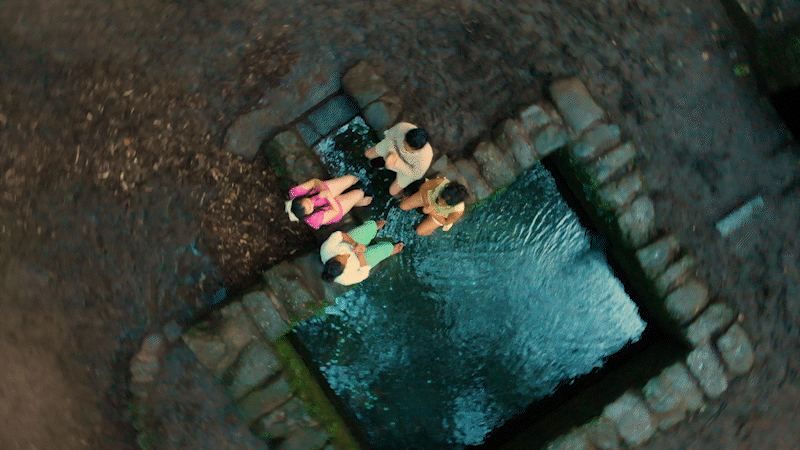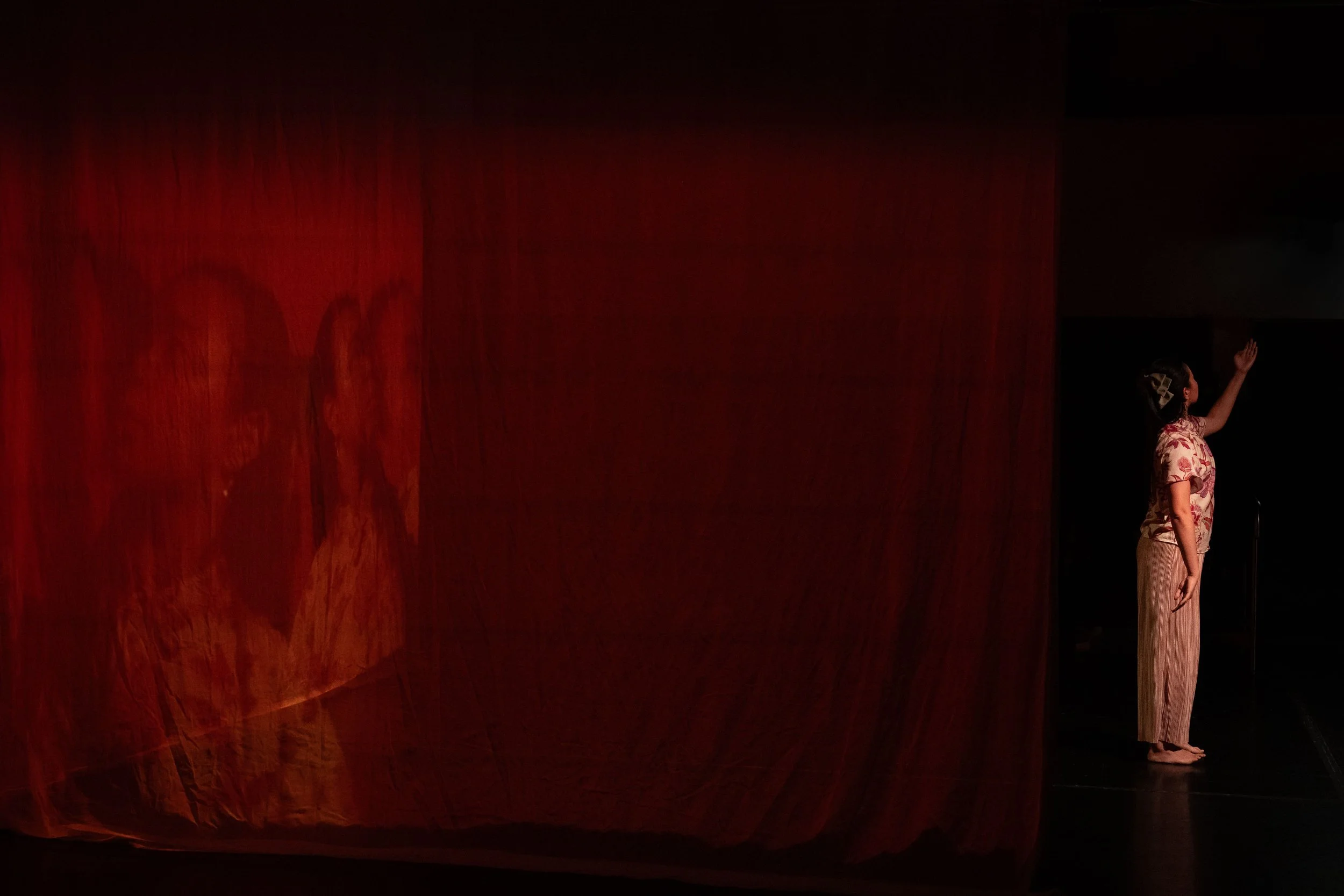Come Rest in Chaos – touring 2025 to 2027, 60’, live performance, film, projection, interactive design
Do you ever feel at odds with those around you? Have you ever wanted to both belong and be left alone at the same time? Do you ever find yourself relating to different perspectives on the same truth?
Using live performance, film and illusion, Come Rest in Chaos creates four distinct sensory worlds inside the theatre, amongst which four performers dance, sometimes beside you and sometimes across from you. As they compose a rhythmic journey through intimacy, conformity and conflict, you’re invited to follow your curiosities through the space and make choices about how you want to be an audience member. A live-responsive soundscape adapts to these decisions.
Come Rest in Chaos is a multi-sensory world where the audience’s agency is dramaturgically central to the work. It has been described by past audiences as “mesmerising”, “playful”, “haunting” and “brilliant.”
Presentations:
17th July 2025 : Bradford 2025 Festival, Presented by Kala Sangam
18th - 19th October 2025 : Nottdance Festival, Presented by FABRIC Nottingham
This show is available for booking Winter 2026 - Spring 2027.
Collaborators:
Artist Direction: Shivaangee Agrawal
Collaboration / Performance: Yamina Alyara, Ajani Johnson-Goffe, Meera Patel, Amanda Pefkou, Takeshi Matsumoto, Jane Chan
Rehearsal Direction: Jane Chan
Costume: Sanna Namin
Production Management: Tom Robbins
Production: Elsabet Yonas, Metal & Water
Supporting Partners: FABRIC Nottingham, Kala Sangam, The Place, Ugly Duck, The Albany, Arts Council England
Below I discuss my process involved in creating the film, projection, and interactive elements of the show.
Pre-Filmed Elements
I shot over a mix of locations with the performers in costume: ancient wells, studio sets, friend’s apartments to build material for the 4 different screens of the hour-long show.
Recursive Projection
By using ultra-short throw projectors combined with hidden cameras. The camera’s white balance, tint, and brightness, is carefully set (depending on lighting conditions and costume) to create the strong red tone I wanted to bathe the scene, that is, it is created entirely organically without any imposition from compositing software. You can see two early tests, versus the finished show.
Light Painting
Using the recursive projection, we hand out torches to the audience to allow them to ‘paint’ on to the screens and leave an afterimage. The performers take up lanterns in the segment for the same effect.
The Technical Process
The show is made using QLab and OBS and uses 4 ultra-short throw projectors to facilitate the dancers and audience getting as close to the screen as possible without casting any shadow. There is a hidden live camera behind the audience with it’s own special rigged light. The gauze is designed to be two-way and so only needs one projector.
The Philosophy of Projection
Two basic ones that first come to mind:
– To add a deeper visual narrative
– As a backdrop
But I was guided also by the following:
– To render emotive close-ups in a theatrical space
– To disorientate the audience: who is a live performer and who isn’t, playing with size and scale too and angle (drone).
– To shape and reshape the space (rolling up, voyeurism looking through) // to conceal and reveal, through windows
– To provide a medium that the audience can interact with (tactile)
– To create a dialogue with the performers and fundamentally change how a scene is interpreted.
Here one screen plays rain drops to simulate a window, while the interior is lit orange and mirrors an interior scene on the wall. While beyond the ‘window’, there is a slow timelapse of the sun rising over fields.
An emotive close-up: the dancer has a specific mark to hit so that the hidden camera will frame her and project onto the screen behind.
The black areas of this image render as transparent on the projection surface, while the bird’s eye view angle and multiplied dancers adds to the disorientation.
Spatialised Sound Design
With a speaker attributed to each screen, I was able to segment out all the individual sounds necessary for the immersion of the audience. There was a limit on the size of these on the rigging so I also EQ’d out the bass frequencies and sent these to giant mounted subwoofers.
In addition to the sound design, I also wrote and record half an hour of new music for the show. Some of these tracks can be heard below.









